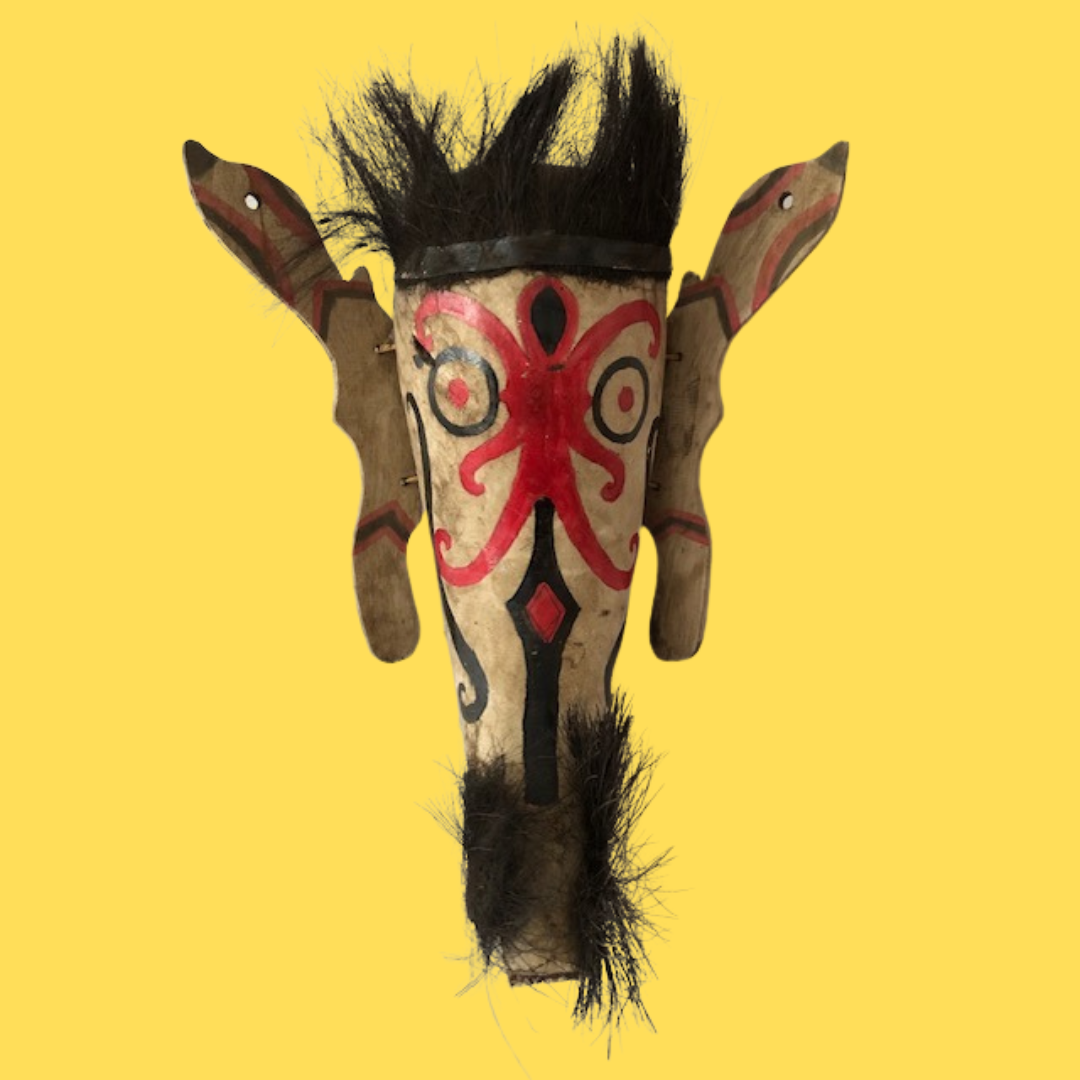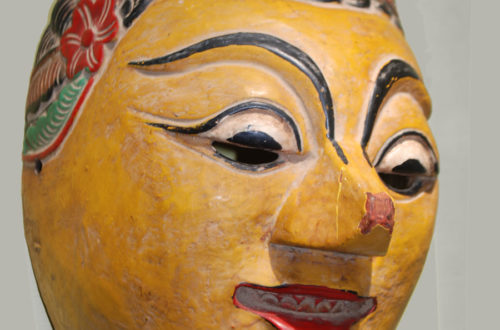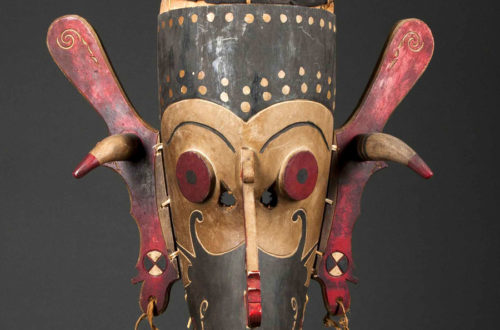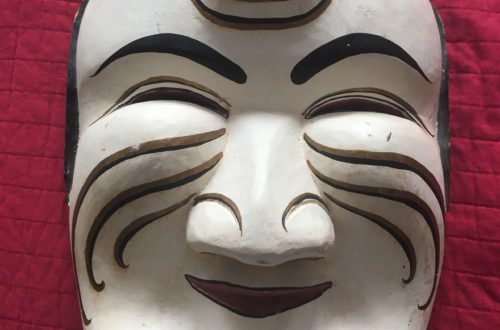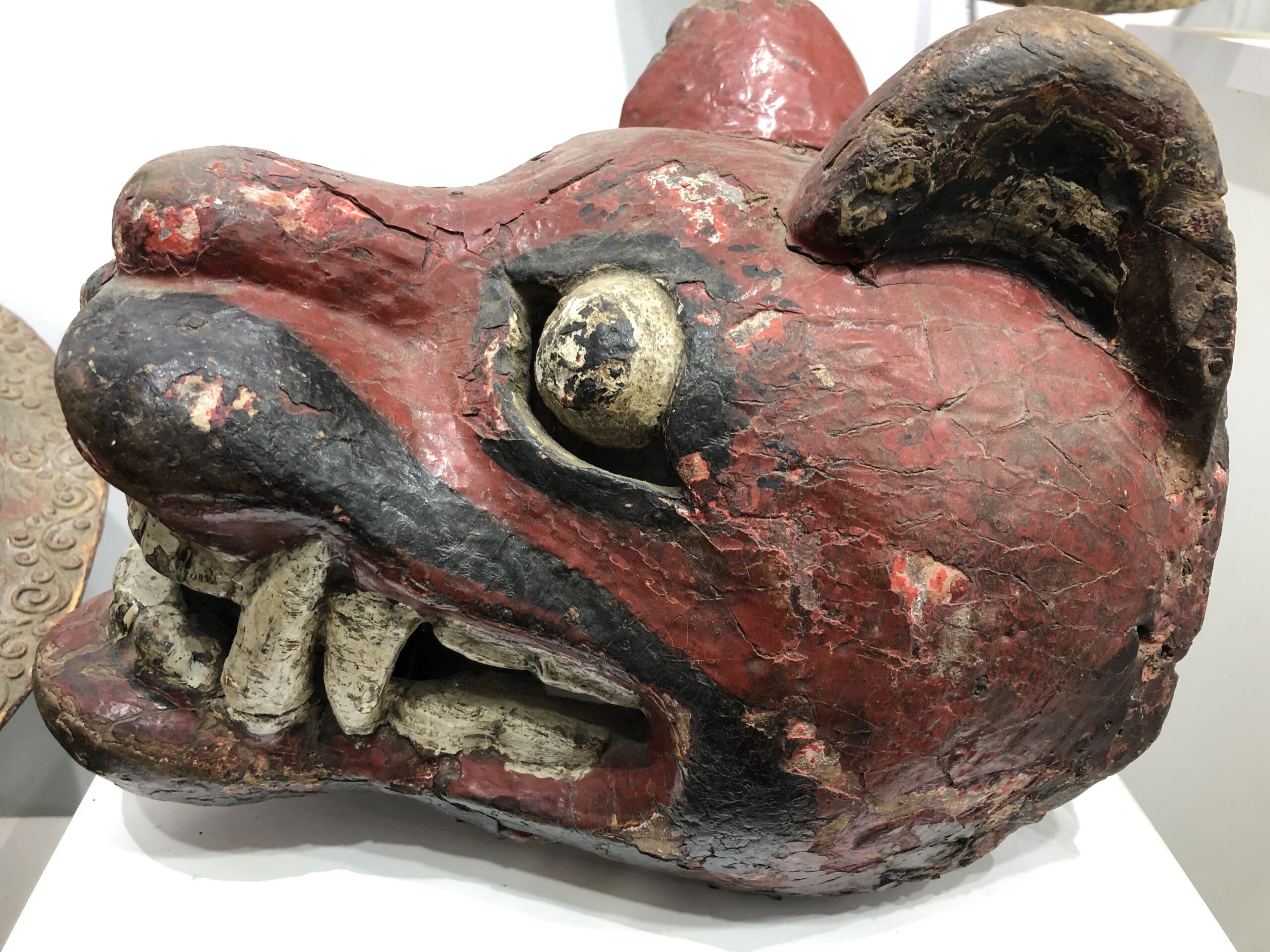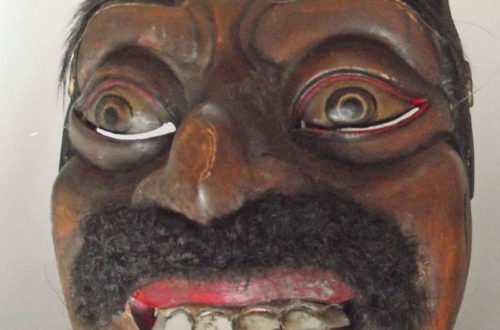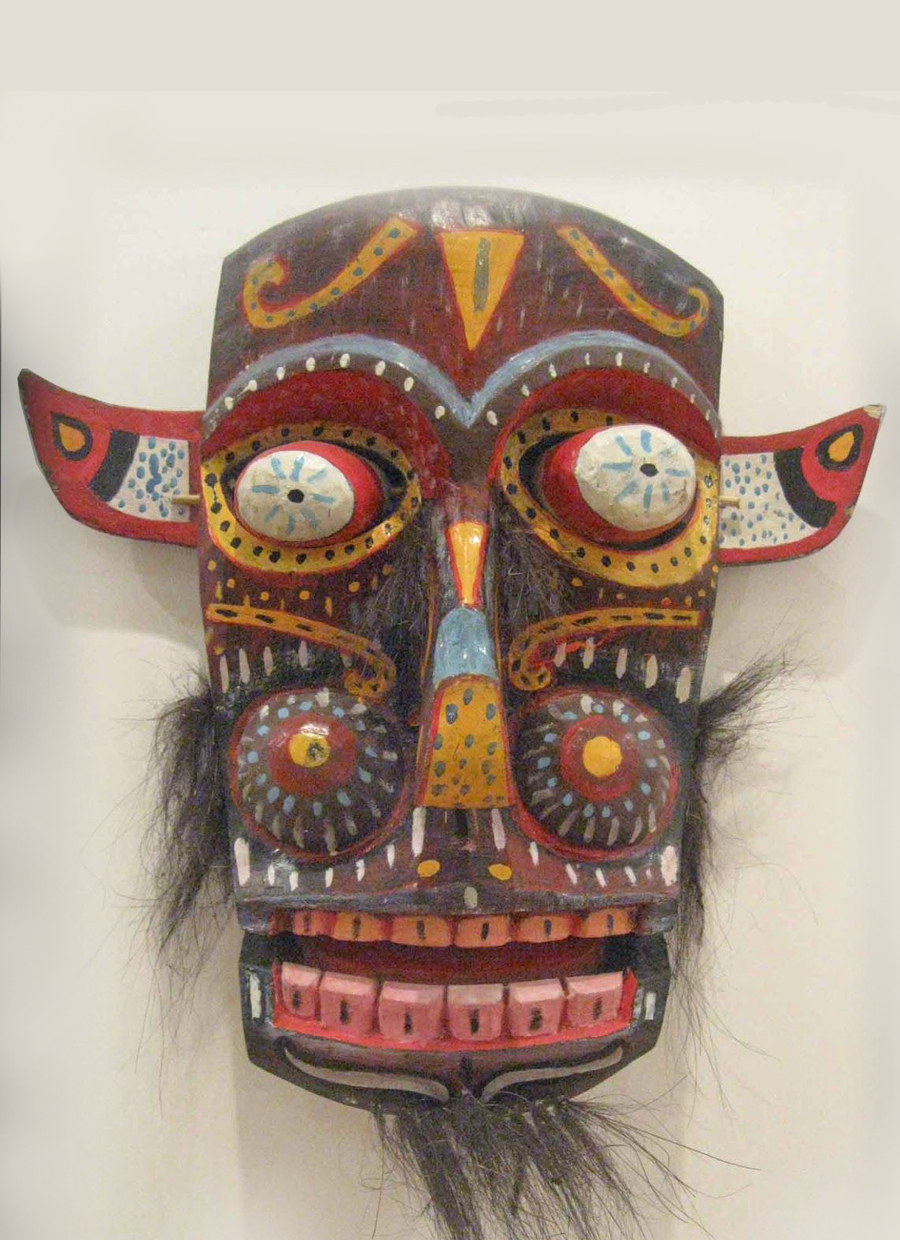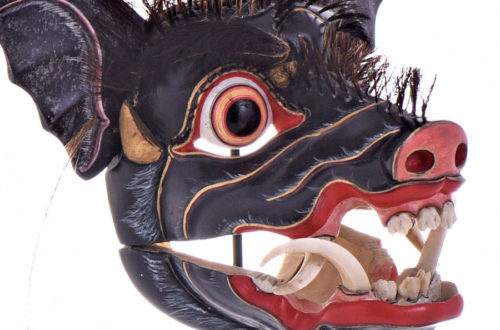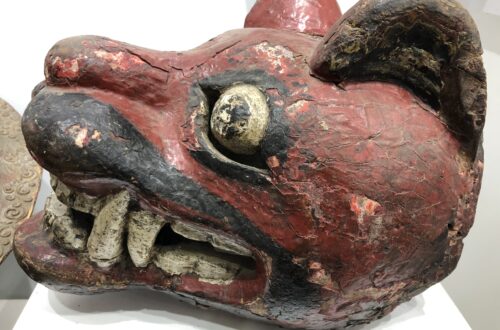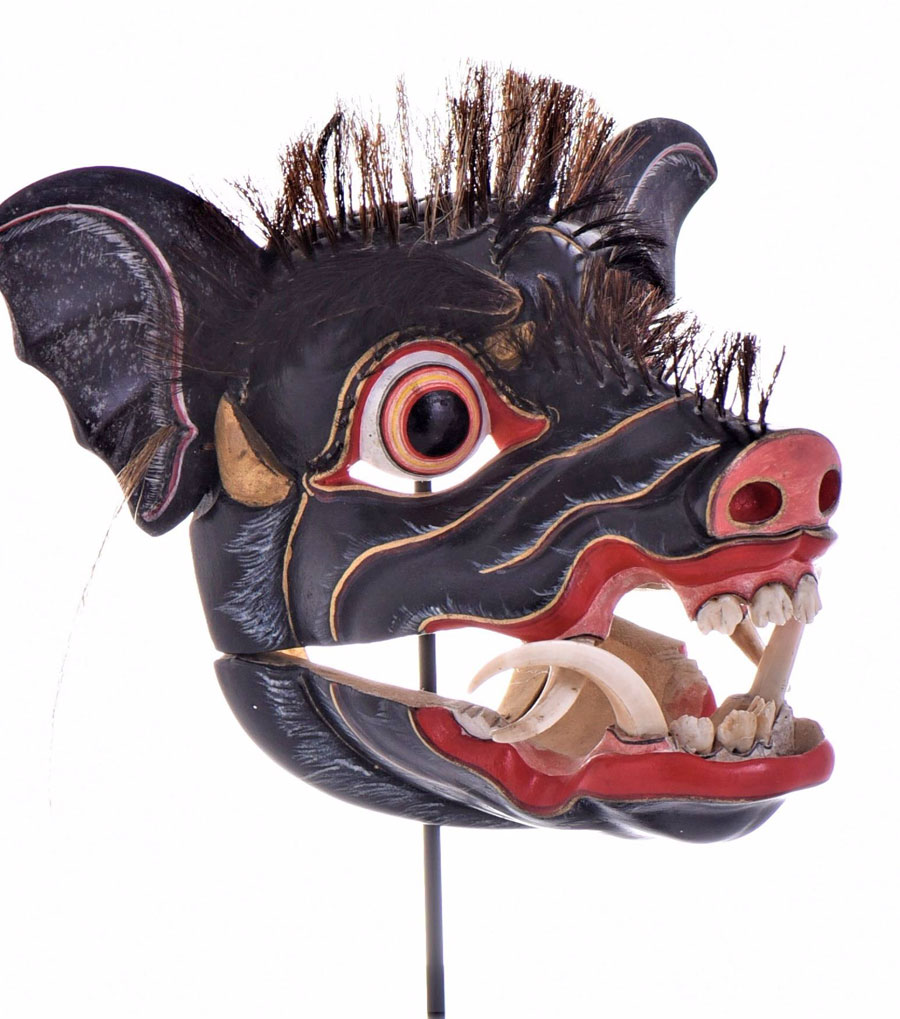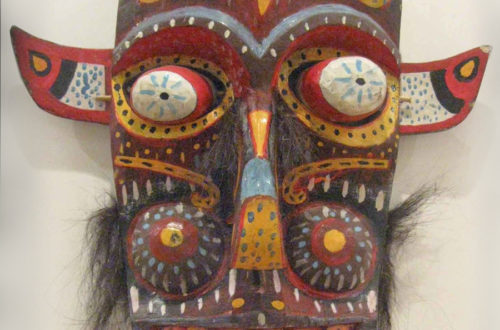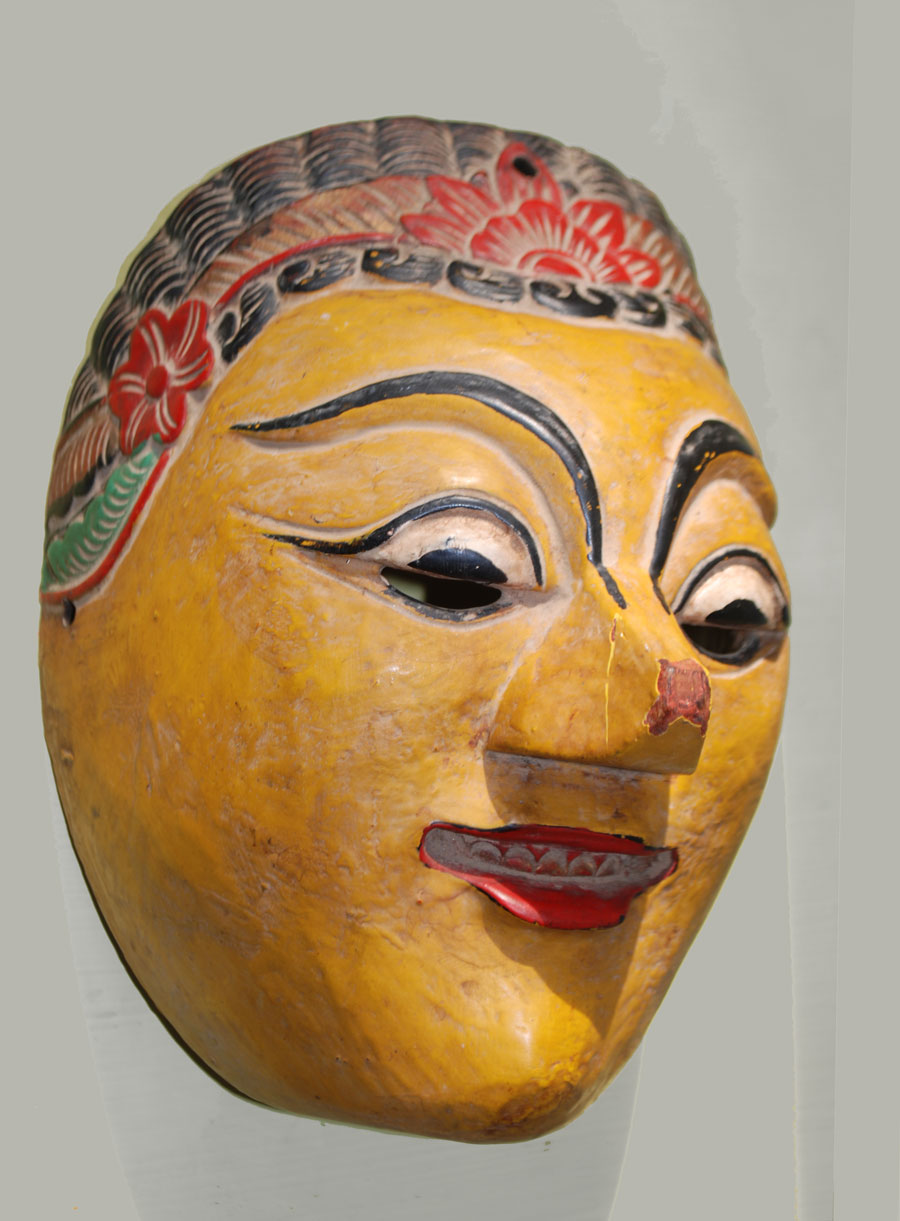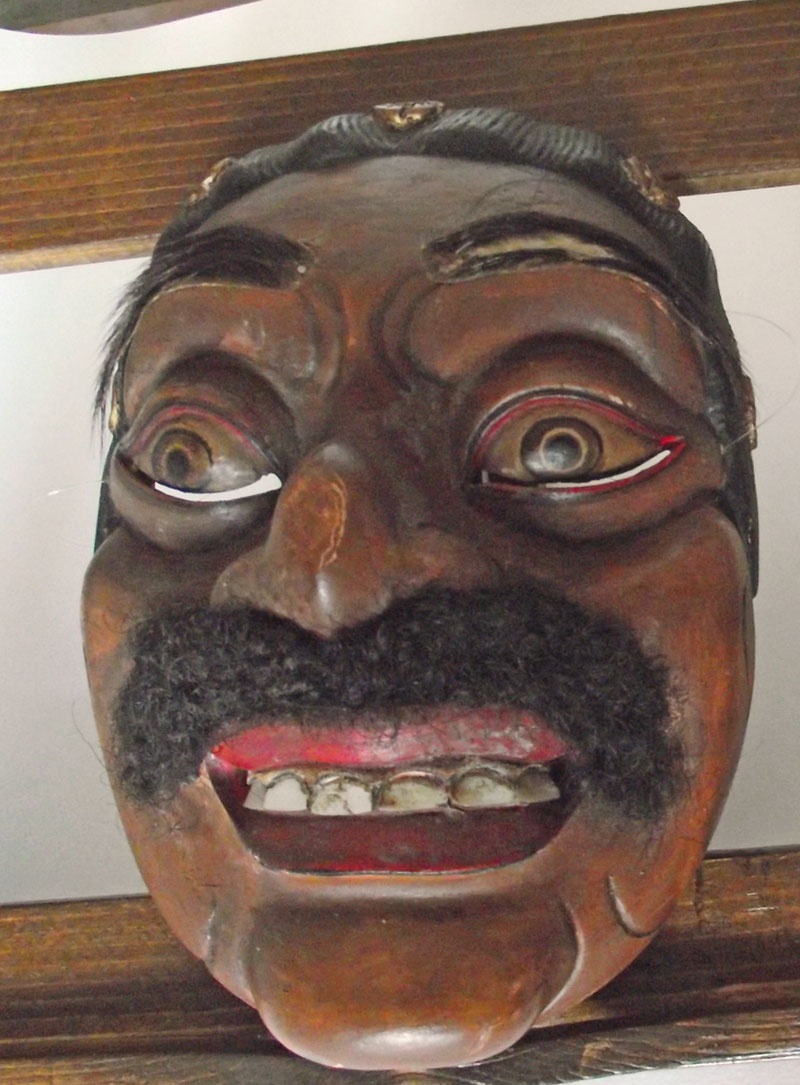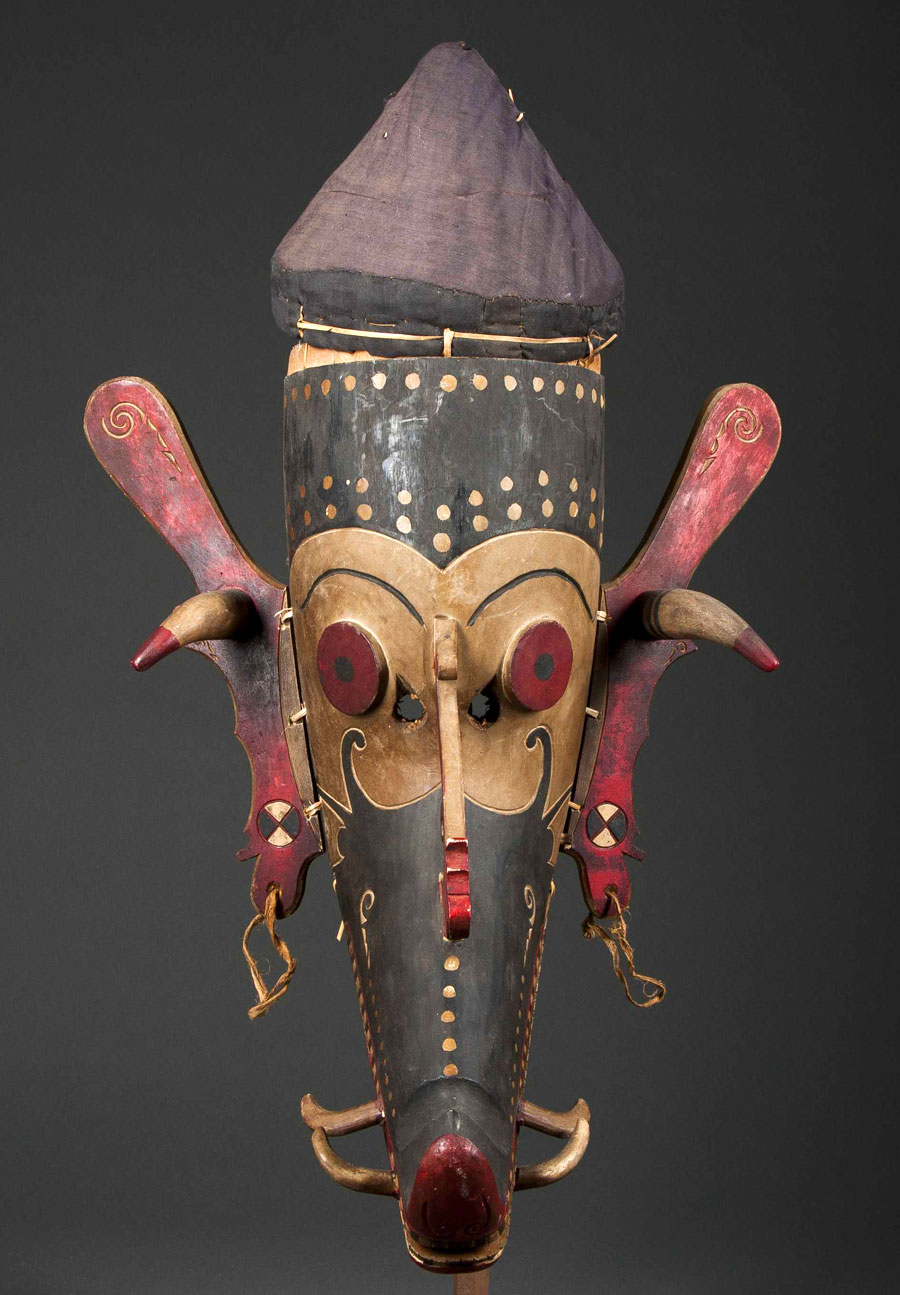In the verdant heartlands of Borneo, amidst the diverse cultural tapestry of Southeast Asia, the Dayak people preserve a tradition that is as visually striking as it is culturally significant: the hudoq mask. Known in the Dayak language as the “hornbill,” these masks are more than mere ornaments; they are profound embodiments of cultural expression and spiritual significance. The hudoq mask is intricately linked to the agricultural rituals of the Dayak people, serving a pivotal role in festivals that mark the rice planting season. These masks are traditionally worn by dancers who perform to drive away malevolent spirits from the crops, ensuring a bountiful harvest. Beyond their agricultural significance, these…
-
-
Indonesian Tiger Mask
Q: I think the mask that I have here should be an old Sumatran Tiger mask? I acquired it out of a Dutch private collection dome 20 years ago. Could I ask your help to identify this beautiful mask. – P
-
Dayak mask from Borneo
This brightly painted mask caught my attention because I have never seen anything quite like it. It was wrongly identified as Javanese, and there was no other information. I think it is from West Kalimantan of Borneo, in another part of Indonesia that is far from Java. What do you think? Bob, 1695
-
2 wild boar masks from Bali
Bali is an island that represents a very small part of Indonesia, and yet they produce many beautiful masks for their traditional dance dramas and the many tourist that visit. Most collectors are familiar with them. But these boar masks are unusual, especially the second one. If you know something about them, please use the comment box to tell us a little more.
-
Another mask I need help with
Q: I got this at an antique shop a few days back. At first I thought he was just an old souvenir tchotchke because there aren’t any holes in the side to keep this mask on someone’s head, instead there are four punctures in the back that look like they are for mounting. There is a dark, smooth looking stain in the wood just above the nostrils in back. The stain appears right where a person’s breath would hit if they actually wore this mask. Maybe someone wore it for something? Conceivably those four parallel punctures could have been for a head strap… Also, the mask was repaired at one…
-
Classic Javanese dance mask
Q: I have an interesting mask to show you that I believe comes from Indonesia. I got it in a trade with another collector. It has some patina and sign of usage. Steve, 1569 A: Thanks for the improved photos. Your masks is from Java and represents a common character in their traditional dance dramas. Unfortunately, I still can’t be sure if it was used or artificially aged. Maybe one of our viewers will comment on that. Look at the beautiful colors that go so well with the classic yellow. Plus, the carving is skillfully done and almost paper thin. Weather it’s a repro or the real deal, I think…
-
Topeng prime minister from Bali
Q: I would like to have your opinion about this wayang topeng mask. Do you think it is original (made to be worn)? Teeth are made of mother of pearl and wood is soft. Thank you, Monica 1554 A: There are several versions of Prime Ministers in the Topeng dance dramas that are performed in Bali. Patih Manis and Patih Keras come to mind, but there are others. Judy Slattum in her well-illustrated book, Masks of Bali, says these characters exhibit cleverness, pride, ambition, and sometimes foolishness. Your carving seems to me to be old, used and in good condition. As usual, you’ve made a good acquisition. A-
-
Dayak hudoq mask
From the Dayak people of the Kalimantan portion of Borneo, the mask is a classical style hudoq depicting a mythical boar, bird and dragon; the face painted in red, white and black, with attached ears, the lobes with remains of fiber cord that once held pendant ear decorations. It is 25 inches high and has never been used. It came from the Cobbs Auctioneers, a company that often comes up with high-quality masks that are not terribly expensive. Can someone explain why a mask of this quality would be antiqued on the front and not the rear?
